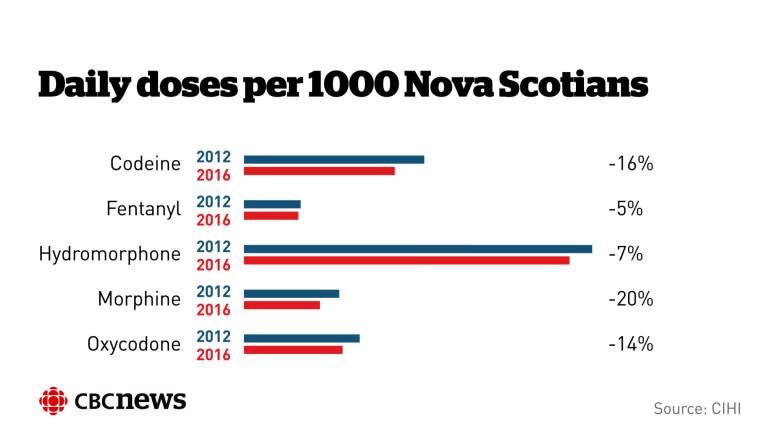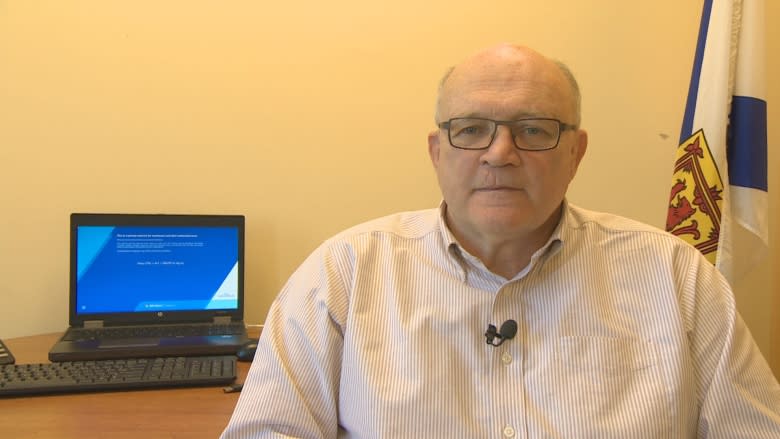Opioid prescriptions on the decline in N.S., but still above national average
Nova Scotia doctors still prescribe more opioids than the national average, but the number of doses prescribed in the province has dropped by an average of 8.7 per cent since 2012.
"Although Nova Scotia was slightly above the Canadian average, it did, along with B.C. and Ontario, have the largest decreases that we saw in 2016," said Jordan Hunt, the manager of pharmaceuticals information at the Canadian Institute for Health Information (CIHI), which released the figures Wednesday morning.
Statistics show that the number of doses of opioids such as hydromorphone, morphine, oxycodone and codeine declined between 4.9 and 20.2 per cent in Nova Scotia.
Prescriptions of tramadol rose in the five-year period by 27.6 per cent.
Across Canada in 2016, the defined daily dose of prescription opioids — an assumed average dose per day, as defined by the World Health Organization — per 1,000 people was 6,246. In Nova Scotia, it was 7,068.
New prescription guidelines
Hunt said it's impossible to say definitively what's behind these trends, but he suspects new prescription guidelines for opioids endorsed by physicians in Nova Scotia and British Columbia in 2016 could be a contributing factor.
Hunt said the CIHI review found that one in five Canadian seniors are prescribed opioids, compared with one in 10 younger Canadians.
One in six seniors receive a prescription for a stronger opioid such as fentanyl, hydromorphone or oxycodone.
"You know seniors as they age, seniors have more prevalence of chronic conditions like chronic pain. They are probably having more surgeries, which would require opiates to treat pain post-surgery," he said.
'People wind up with a lot of disability injuries'
Nova Scotia's chief medical officer of health said the Nova Scotia's relatively higher population of seniors could contribute to the province's higher-than-average opioid prescription rate, as well as the types of work Nova Scotians do.
"Traditionally, a lot of our jobs have been very physical, whether it be fishing or mining or those kind of things, so people wind up with a lot of disability injuries," said Dr. Robert Strang.
Many opioid prescriptions for chronic pain in recent decades were "not really necessary, but now we have to deal with the outcomes of that, which are large numbers of people dependent on opioids," he said.
Strang credits Nova Scotia's prescription-monitoring system for the province's gradual decreases in prescriptions.
"We've had a long-standing prescription monitoring program, which works first of all in an educative way with prescribers, but has the regulatory tools as well," he said.



